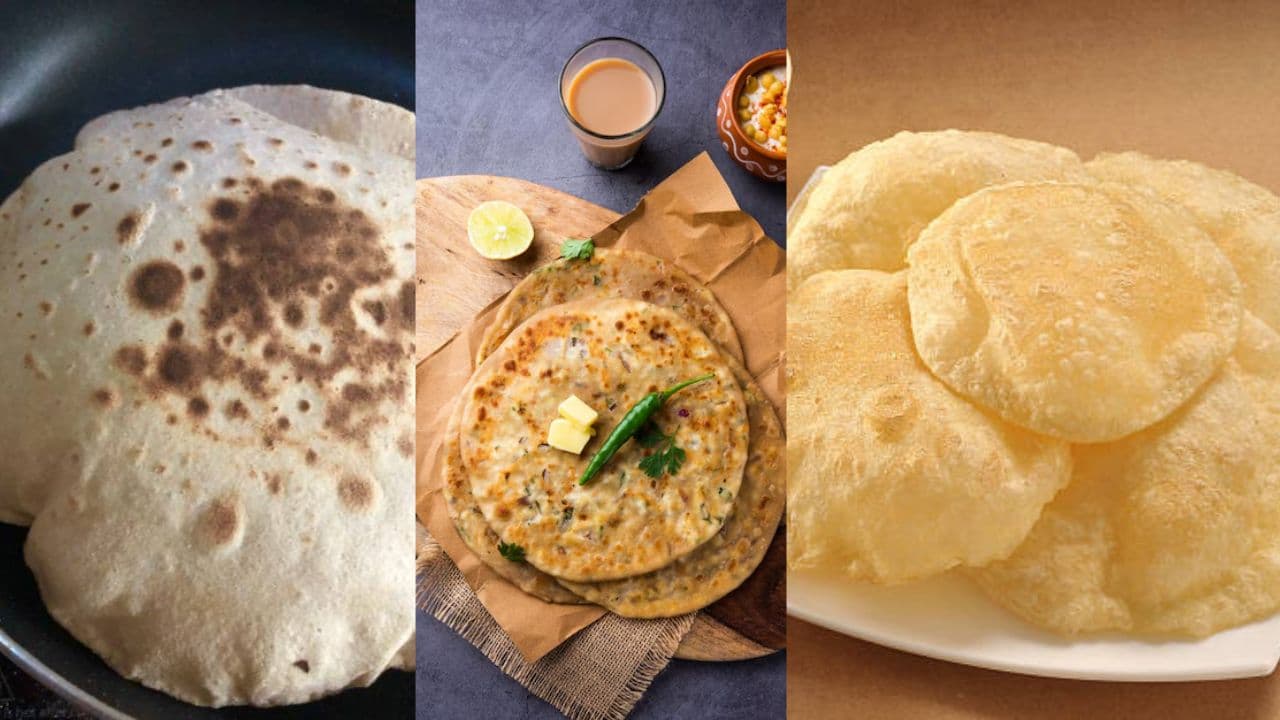Roti, Paratha and Puri Dough Difference: Many people do not know that bread, paratha and puri, the way of applying the flour and the texture of flour is different. So today we will tell you the difference between these three.
Puri vs Roti vs Paratha Dough: Bread, Paratha and Pudi have their own special places in the Indian catering plate. The basis of all three is wheat flour, but do you know that the way of kneading these three flour and its shalliness is completely different? This is why the bread becomes soft, the paratha flask and puri puffed up. If the flour of these three is kneaded equally, then the taste of the roti will come correct, nor the layer of paratha nor the pureness of the puri. Many people feel that puri, paratha and roti can be made with a kind of flour. In such a situation, let us know what is the difference between the method of kneading the dough, which gives them a different taste.
What is the difference between roti, paratha and puri flour (Roti vs Paratha vs Puri Dout Difference)
Bread flour-soft and simple
Bread flour is always torn down with light hands and soft. Only flour, water and a pinch of salt (optional) are added to it. This dough should neither be too hard nor wet, so that the bread does not stick while rolling and the bread looks soft and light. It is also necessary to give bread flour some time and let it be set and set, so that it can elasticity and it is easy to eat and digest bread.
Also read- Chile Potato becomes a sagi, so do not make these 5 mistakes, crispy and crisp
Paratha flour-tight and rich
Paratha flour is not as soft as bread flour. It is slightly tightened so that layers can be made in it while rolling. Many people add oil, ghee or curd to paratha flour so that they become more tasty and layer (layer) can be easily done. For stuffing parathas (such as potato, cabbage or cheese), it is necessary to keep the dough slightly hard, so that it does not torn when the filling. At the same time, the flour for the plane paratha is dumped medium tight, so that the ghee or oil can suit and crisp and crisp.
Also read- Mango pickle will not be mildew, do not make these 5 mistakes while storing
Pudi flour-tight and oily
Pudi flour is the most different and tight kneading among these three. It should not be soft at all, otherwise it will stick to rolling and on frying, the oil will absorb the oil instead of swelling. A little oil or ghee is also added while kneading the flour of the puri, so that its color comes golden and crispy after frying. Flour should not be applied while rolling the puri, otherwise the oil gets spoiled while frying. This is the reason that the tight the flour of the puri is, the more puffed and delicious puri will be made. Also, there is no need to apply too much flour in tight flour.
